We will likely never be privy to the full extent of circumstances that lead to Vinland Saga’s sequel season changing hands from Studio WIT to Studio MAPPA. This trend of one-and-done has become increasingly common as production committees push for sequel content as soon as possible while studios aren’t always in the best position to accommodate these demands. In the case of Vinland Saga, the twenty-fourth and final episode of the first season aired without any plan of a continuation, prompting the team to creatively arrange the material such that it could stand alone in the event that a sequel never materialized [1]. Over the next year it would seem the staff, lead by director Shuhei Yabuta, were indeed afforded the opportunity to continue their mission, even making significant headway in the pre-production phase, before an unforeseen obstacle forced the team to re-evaluate their situation [2, 3]. In Yabuta’s own words, moving his personal workspace to MAPPA was unrelated to the series also changing hands, and he would have directed the series at MAPPA had the team been able to stay at WIT [4, 5] (the close proximity of everything in Tokyo makes this not only possible but fairly common practice). That was not the case however, and the fact of the matter is that the continuation of Vinland Saga found itself in a terribly uncertain position.
From the perspective of MAPPA, it made sense to adopt the now orphaned series. Aside from having already taken on its director, some of the pre-production had been completed. More importantly though, the higher-level staff was assembled and eager. They only needed the physical space and supporting staff to actually start turning the concepts into finished animation. MAPPA’s investment is not insignificant, but it can be considered relatively small compared to recent titles they produced from the ground-up like Chainsaw Man, Jujutsu Kaisen, and many more. In return for their trouble, they gain another popular title to bolster their all-important brand recognition – a goal which CEO Manabu Otsuka has not even pretended to hide. If this situation hits you with a case of Déjà vu then you’re likely aware of how similar it is to the changing of hands of Shingeki no Kyojin – the key difference being, however, that instead of a complete overhaul of almost every individual involved, the Vinland Saga team was kept in intact.

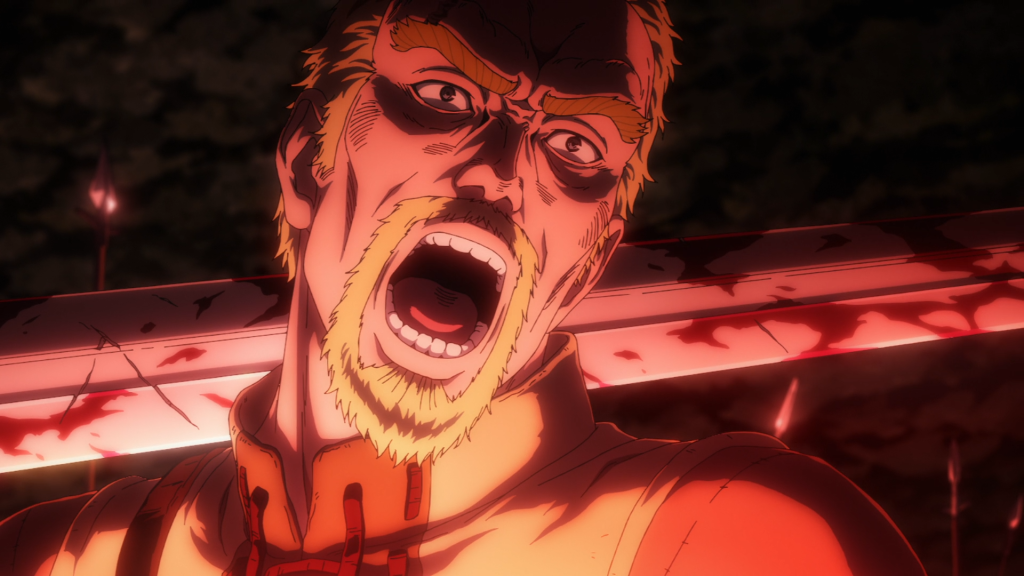
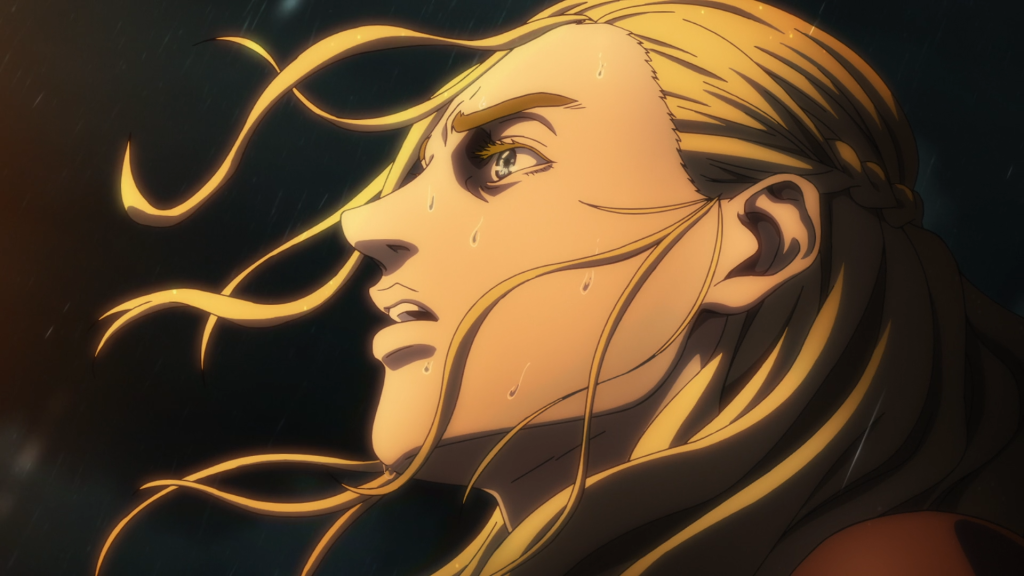
On paper this no doubt reads as a much simpler feat than it actually was. The anime industry is reluctant to hand out permanently binding contracts, which means the workforce is predominantly comprised of freelance artists; if they don’t work, they don’t receive an income. Thus, when the prospect of a sequel was interrupted, it would be impossible to fault anyone for immediately pursuing entirely different work elsewhere. Instrumental in this process of keeping the team together was animation producer Hiroya Hasegawa [6]. The job of an animation producer is, as the title suggests, to produce animation, but the means through which they accomplish this task is by keeping contacts and communicating frequently. They oversee and manage the roster of story boarders, directors, and animators, many of which they recruit themselves, across the entire production. If a pivotal episode has particularly strong staff, it’s often because the animation producer allocated them towards it [7].
It should be noted that despite what I am sure were Hiroya Hasegawa’s best efforts, the team, especially on the animation front, is not exactly the same. In fact, this would be where the first major compromise is found, but only when approached from the perspective of an animation fan. While the first season is by no means a sakuga showcase, the departure from WIT led to many key contributors unable to participate. The exception to this is the main animator, Akiko Kudo, who not only reprised their role, but made up for the rest of the slack, handling far more scenes than they did the first time around. Instead you could say the variety in action animation styles were lost in the transition.
Nonetheless, the consistency at the macroscopic level across both seasons of Vinland Saga is incredibly rare. For every situation like this, there are countless examples where the sequel changing hands resulted in a not so fortunate outcome, ultimately ending up on a completely different creative wavelength as the original. If it wasn’t already obvious from the final result, the effort this team made to stay together through what was effectively a full-body transplant speaks to how much of a passion project Vinland Saga is for them.



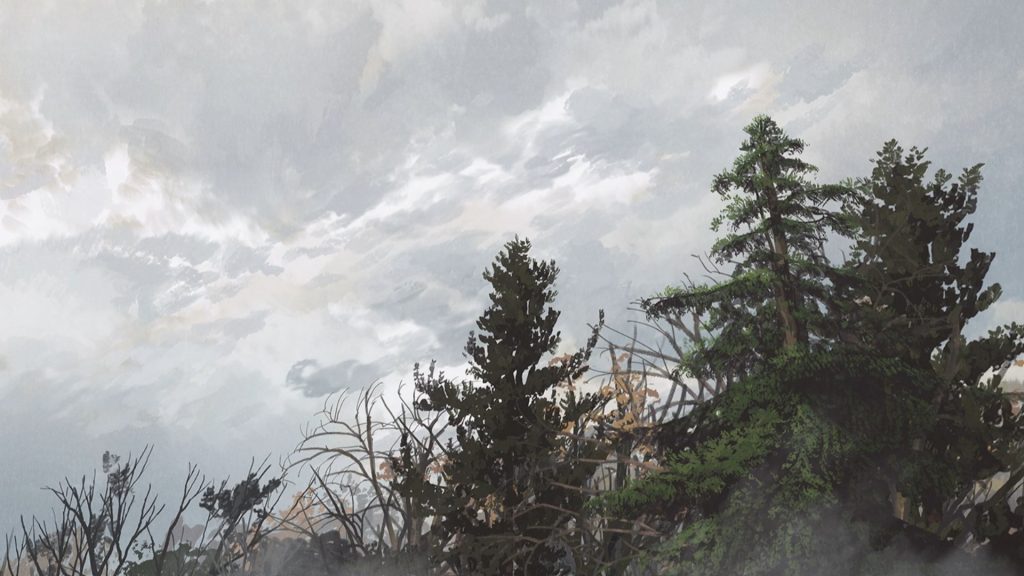
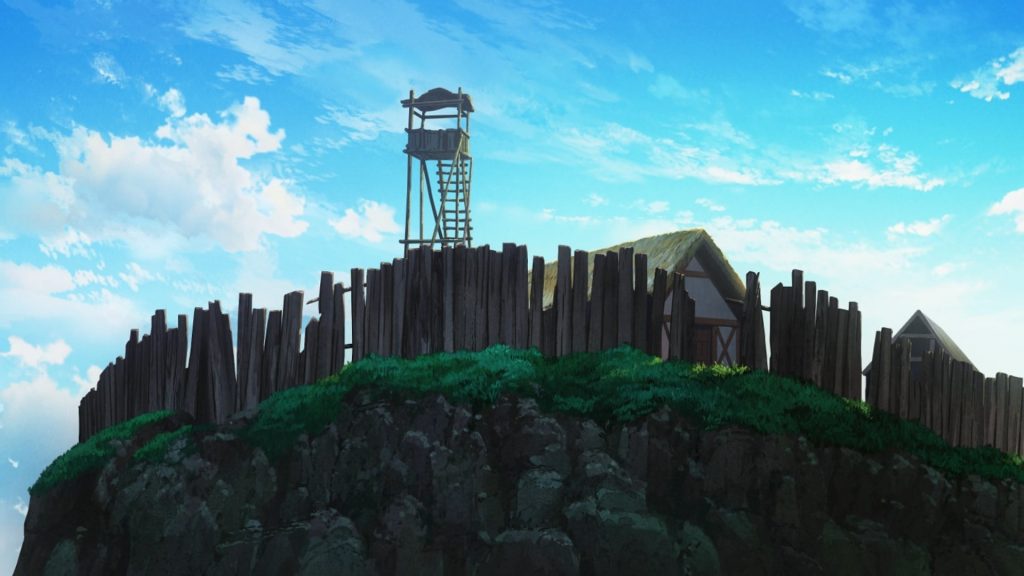

With the staff secured, the priority then shifted its focus to following up on what was already a very adept adaptation. The team at Studio WIT under director Shuhei Yabuta collectively worked to isolate the strongest aspects of Makoto Yukimura’s historical epic and subsequently ensure those moments received the utmost care, even if it meant lesser ones would fall through the cracks. Commercial animation is defined by compromise, and especially considering the highly demanding nature of the source material in Vinland Saga’s case (horses, detailed designs, large-scale armies), that they were able to ensure a sufficient baseline while still nailing the peaks is commendable and then some.
The industry has also gotten concerningly effective at making compromises that aren’t seen in the final product by the general audience. This smoke-and-mirrors charade usually amounts to an inordinate focus on ensuring the characters’ faces are on-model since this is the aspect that most fans are paying attention to. Competently drawn perspective and/or movement are secondary, and often unnoticed by most viewers even when they are present at a high level since they require a supplementary understanding. This isn’t a knock on Vinland Saga’s production specifically, as this type of corner cutting is an industry-wide phenomenon, but it nonetheless underlines the deprioritized episodes of the series, of which there are many, regardless of whether they were produced at WIT, or at MAPPA.
What about the ceiling then? As previously mentioned, this is the area where Vinland Saga has shined the most as an adaptation, and it all starts with an understanding of the source material. That’s not to suggest Makoto Yukimura’s manga is particularly difficult to understand – it wouldn’t have reached the popularity that it has otherwise – but there are still a number of finer details that require attention.
First and foremost: his depiction of violence. The setting in which Yukimura chose to base his story naturally invites violence. Thus, in order to convey his pacifist perspective, it’s paramount that the story never revels in the number of heinous actions that regularly occur. They exist to serve his commentary rather than serve some fetishistic outlet, even if the latter is generally understood to be more commercially profitable. The anime likewise understands this in its handling of the adaptation. With that said, one area where it could be criticized on this front is the opening scene. Yukimura’s manga begins in media res to establish Askeladd and Thorfin’s relationship – the driving force of the prologue – first and foremost. The anime instead opts for a chronological telling of the events, and in doing so, opens with an epic battle that is only mentioned in the manga, rather than shown. It’s significant because this is the conflict that ignited Thors’ change of heart concerning war, and prompted his decision to desert the battlefield. The problem is that it also serves as the hook to the anime, using its gratuitous production circumstances (abundance of time and action animators) to supply a similarly gratuitous action set piece. The introspective, delicate framing necessary to lend credence to Thors’ decision is absent, and it instead runs the risk of alienating some of its audience from the start. Truth be told, this is only as big of a talking-point precisely because it is the opening scene of the entire anime. More often than not, Vinland Saga’s team demonstrated a keen understanding for the role violence has to play in this story.
For as much as the staff understand Makoto Yukimura’s manga, the crowning achievement of this adaptation is the manner in which it handles its characters’ dialogue. Discontent with how most anime handle the pace of conversation, director Shuhei Yabuta made it a specific goal of his to direct the voice actors in a way that their exchanges feel natural [1]. Hardly a new concept, he speaks of “ma” (間), translated as “interval” in English, referring to the figurative space between the spoken lines. Vinland Saga is a story with a lot of heavy-hitting dialogue, so it’s crucial that the actors are doing more than just regurgitating their lines. There are numerous places throughout the series where a conscious effort to enhance the dialogue can be felt, perhaps none more so than Leif’s conversation with an imprisoned Thorfinn at the end of the first season. The performance is impressive in and of itself, but the overall direction of the scene is what elevates it to a truly memorable level. Aspects such as Leif’s brief pauses and subtle gestures, the lack of an overbearing underscore, instead replaced by intermittent ambient noises such as the beads of condensation falling to the ground: these all contribute to a powerful scene that more than serves as the exemplar for this teams approach with this adaptation.
The above example is without an underscore, however, there are many other instances where the OST placement works as an extension of the interval between the lines of dialogue. Vinland Saga, like most TV anime, is not film scored, meaning the music was made separately from the storyboard, then later brought together through the process of editing. This is accompanied by a whole host of challenges and compromises, but even still, the placement of the music is so meticulous at times that Yutaka Yamada’s masterful compositions can feel like they were created specifically for their respective moments. In Canute and Ragnar’s final exchange in episode 18, as the dream progresses towards its end, a vocalized chant gives way to orchestral strings with crescendos and diminuendos loosely fitting the swells and pauses in dialogue. Scenes as overly dramatized as this one are fairly uncommon in Vinland Saga, however, the ensuing transformation Canute undergoes is drastic to the point where his moment of catharsis needed to be equally thorough in order to be believable. It needed to completely close the book on anything he was holding on to from his past life as a hopelessly dependent person, and pave the way for his new life as someone the entire nation of England will depend on. It isn’t hard to find reasonably valid criticism regarding the believability of Canute’s transformation, but it’s the adaptation’s handling of a scene like this one that lends an important level of human authenticity to his character.
These moments are representative of the ceiling of the anime, which is to say there are times where the music is just roughly overlaid over ten-plus minutes of animation without much consideration for where the notes land, and similarly where dialogue falls back to anime’s usual habits. It ultimately speaks to the nature of series direction, and how the demands and general scope of these TV anime projects have gotten too large; which is to say, series directors are often burdened with bigger-picture problems, and fine-tuning the minutiae of every line of dialogue is rarely something they can afford. For as much as he tries to be everywhere at once, it’s simply not possible for Shuhei Yabuta, therefore making delegation mandatory. This brings us back to a major aspect playing in Vinland Saga’s favor, and the reason this adaptation is able to consistently reach the ceiling during its most important moments: it has access to a number of highly skilled, experienced artists at the storyboard and episode direction level who happen to be receiving the bulk of the delegation.
The clear front-runner of Vinland Saga’s storyboard and episode direction team is Atsushi Kobayashi. A great deal of time was clearly spent considering where his efforts would be most appreciated and unsurprisingly, nearly all eight of the storyboards he provided to Vinland Saga encompass story-defining moments. His episodes have the strongest “ma”, both because they receive higher priority from Yabuta and the editing team, but also because they’re consciously designed with it in mind in the first place, reducing the amount of fine-tuning that has to be done after the board is finalized. Both the Thorfinn-Leif and Canute-Ragnar examples above happen to be from episodes he helped with.
“As a director, I check the storyboards for each episode, and Mr. Kobayashi’s storyboards have almost nothing to be altered.” [11]
-Shuhei Yabuta
Kobayashi’s storyboards are often also underlined by poignant metaphor and tasteful symbolisms that aren’t present in their manga counterpart. The twenty-eighth episode (S2 #04) for instance, establishes an insect-slave metaphor, first with Einar’s speech, again exclusive to the anime, where he frustratedly exclaims that the slaves deserve to be treated better than insects. Later in the episode, this concept resurfaces by having Thorfinn absent-mindedly trample a grasshopper underfoot in a dream centered on his past life as a warrior, only to mirror the exact same scenario in their current time in the final scene, but instead having the grasshopper jump out of the way just before King Canute can step on it. There are multiple ways to interpret the meaning of this metaphor. Young Thorfinn, being physically strong but mentally weak, kills the insect, but Canute, being physically weak but mentally strong, manages to avoid it—though crucially, he makes no attempt to avoid it; the insect moves out of the way on its own, which could speak towards the hypocrisy embedded in his politics. The same oxymoronic politics that underline the entire arc: the benevolent slave owner, the just monarch. Beyond this single point, the episode is filled with ambitious ideas, originating from the creative team feeling that Einar was lacking some important characterization in these early chapters [8]. To place as many resources as they did to this episode in particular was a bold move that ultimately paid off.
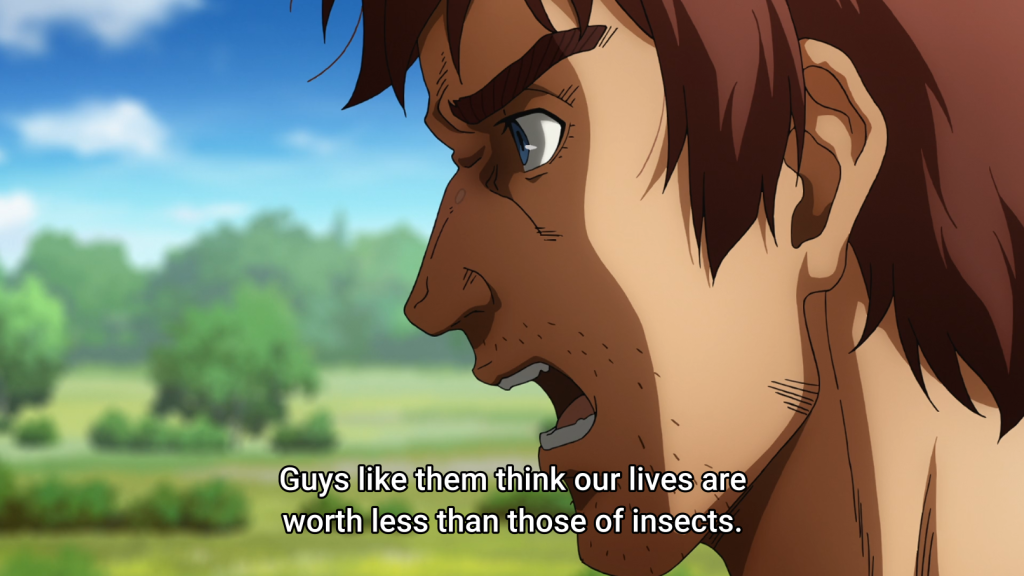

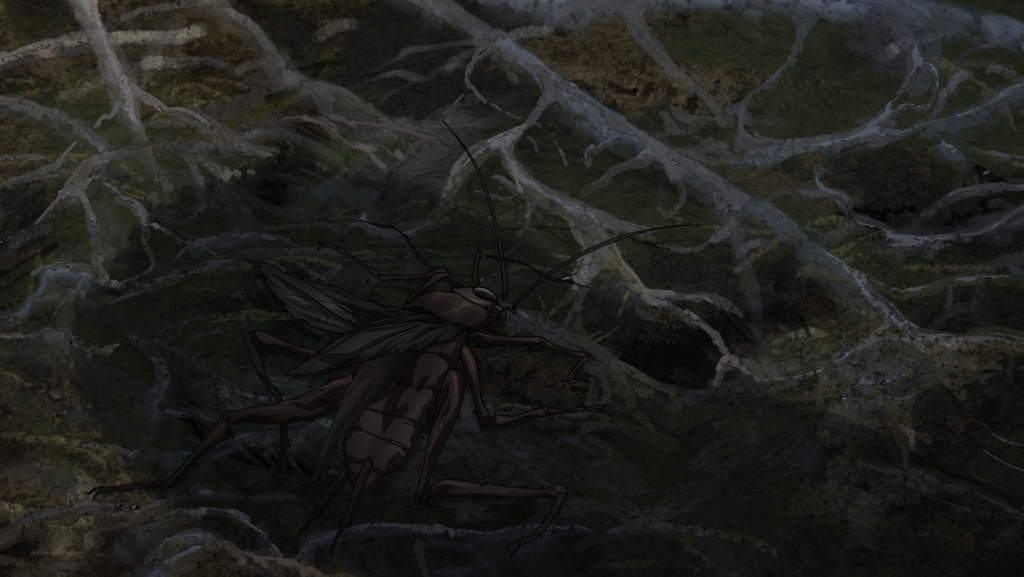
For as much credit as Atsushi Kobayashi deserves for his contributions to the show, the ideas he’s planted in the static storyboard still need to be brought to life: a job which then falls on a host of episode directors. More precisely, six different episode directors have been trusted with processing his work across both seasons, giving each of Kobayashi’s storyboards a slightly different flavor. Only once did he bring his ideas to fruition himself, which culminated in the masterful fourteenth episode of the first season.
With this chapter, Makoto Yukimura explores Christian guilt, piety vs. godlessness, and existentialism. All while still working within the confines of the Vinland Saga narrative. Through the lens of Anne, a character introduced solely for this episode, the series finds a level of focus that isn’t commonly seen elsewhere. Atsushi Kobayashi’s well-read awareness of the aforementioned themes made him the ideal choice to direct it. He specifically mentions the work of philosopher Søren Kierkegaard [11] and the various ways in which he instilled his thinking into the various events that play out as Askeladd has no choice but to authorize an atrocity of a different flavor. To this point, the violence depicted in Vinland Saga was largely between foes locked in combat. The systematic killing of civilian life provides further authenticity to the historical account, while also having the benefit of being presented with the necessary gravitas by Atsushi Kobayashi.
With such a fantastic result, it’s natural to wonder why his output on Vinland Saga was largely limited to storyboard-only. Primarily, it would be fair to say it allowed him to cover more ground across the series, since episode direction is a months-long investment. While it’s feasible to direct several episodes simultaneously, it would still mean we might only see his contributions on half the number of episodes in the best-case scenario. Beyond that, he may have simply not wanted to dirty his hands in the trenches considering the current trajectory of his career – one which is surely worth recapping.
Atsushi Kobayashi began his career in animation as a production assistant at Production I.G. A studio with an undeniably prestigious output and storied reputation, it would be fair to say Kobayashi had among the more authoritarian upbringings one can receive in this industry. The sink or swim environment led to the latter outcome for Kobayashi, instilling a distaste for cutting corners in his processing duties and eventually garnering the trust of his seniors. Specifically, he founded a strong connection to director Tsutomu Mizushima – known for directing Shirobako, among a number of other hit comedy series – working as an assistant director across the entirety of Blood-C and later even following Mizushima to non-I.G. series such as Girls und Panzer. As an episode director, Atsushi Kobayashi’s output is not the kind that is designed to blow the audience away with auteur-esque flourishes. Despite entering the industry as a production assistant, he later developed some drawing skills, but not to the point where he could single-handedly make large scale drawing revisions at will. Instead, his strengths were organization and the aforementioned unwillingness to cut corners. Thus, by leaning on the competent staff he was often surrounded with, the result was more often than not a very polished and complete product.
This recap has been rather optimistic so far but it unfortunately takes a sour turn upon Atsushi Kobayashi’s first series director opportunity: Just Because (2017). The production woes of this coming of age romance series are well publicized, partly by director Kobayashi himself, though his incendiary words have since been deleted from social media. In essence, Kobayashi was doing what he always did: trying to make good on his high ambitious – a noble cause, and one that is tough to fault. However, the difference was he wasn’t working at Production I.G. anymore, but instead Pine Jam: a young studio that had yet to find their footing in the industry. The situation quickly unraveled, with the result being a messy situation both behind the scenes and on screen [10].
It may still be some time until we see Atsushi Kobayashi take another shot at series direction, if ever. However, in the meantime, he’s returned to contributing storyboards and directing the odd episode or opening. If there were any concerns over his handling of the Just Because situation, it didn’t reach the staff at WIT, who were more than willing to thrust Kobayashi into a major role on Vinland Saga, as previously outlined.
“I think Kobayashi-san’s storyboards tells us the importance of directing. Excellent choice of framing and angles, a film with metaphors and ideas gives the story three dimensions. It is truly essential for our team.”[9]
– Shuhei Yabuta
While Atsushi Kobayashi is easy to digress on in such a central role, Vinland Saga was not without a number of other skilled artists rounding out the roster of experienced storyboard and episode directors. Tadahito Matsubayashi regularly delivered work close to the series’ ceiling while also rarely being afforded the same luxury of resources that Kobayashi’s episodes did. The 32nd (S2 #08) and 40th (S2 #16) in particular are fantastic examples of great processing – on Yoshiaki Kawajiri’s storyboards no less! The 39th episode (S2 #15), directed by Tokio Igarashi, is also a notable standout. The credits of this episode suggest it was handled by the team of Attack on Titan’s final season(s). This isolated, effectively “in-house-yet-outsourced” nature allowed it to exist outside the regular production schedule, affording far more time for retakes and polished drawings deserving of Arnheid’s extraordinary tragedy. In the end, it was around this point that said production schedule would have caught up to itself, becoming unreasonably tight, and introducing significant cracks over the final stretch. This in many ways mirrors the first season’s production, but also underlines the exercise in compromise that TV anime has long since existed as.
Vinland Saga is not a perfect adaptation. Such a concept does not exist. Instead, it’s the ideal adaptation given the circumstances: one that recognized its limitations, smartly planned around them, and ultimately managed to deliver when the need was strongest. As of this writing, there is no announcement of a continuation. However, history would suggest that regardless of when or even where it happens, this team will be there, no matter what.

If you enjoyed this post, please consider supporting on ko-fi: here
References
1.
https://web.archive.org/web/20191207025433/https://prazeressenpai.info/creators-interviews-series-04-shuhei-yabuta/
2.
https://twitter.com/yabshu55/status/1493151639988887555?s=20
3.
https://twitter.com/yabshu55/status/1536432273327013888?s=20
4.
https://twitter.com/yabshu55/status/1536432391010799616?s=20
5.
https://twitter.com/yabshu55/status/1536433560156262400?s=20
6.
https://twitter.com/yabshu55/status/1534683117704708096?s=20
7.
https://twitter.com/yabshu55/status/1632493082443919363?s=20
8.
https://twitter.com/yabshu55/status/1620169748029018113?s=20
9.
https://twitter.com/yabshu55/status/1620398438545526784?s=20
10.
https://blog.sakugabooru.com/2017/10/16/just-because-and-the-tv-anime-problem-living-characters-dead-production/
11.
https://vinlandsaga.jp/special/special_interview/vol3_part1.html
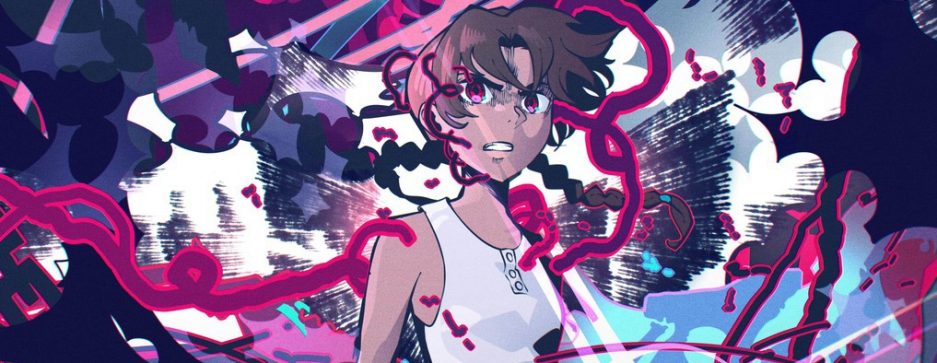
I saved this article when you published because I had no time to read it, and then, one year later, I finally managed to do so.
Thanks for this general showcase of events. It perfectly encapsulates what I feel about this adaptation and explains its highs and lows.